Supervisor
Researcher
Visiting Students
Interns
Completed
-

 Dr. Jinwon Yoon (2025) Assistant Professor, University of Korea
Dr. Jinwon Yoon (2025) Assistant Professor, University of Korea -

 Dr. Taeho Oh (2025) Post Doc, KAIST
Dr. Taeho Oh (2025) Post Doc, KAIST -


 Hyunchul Park(2025) PhD Candidate, KAIST
Hyunchul Park(2025) PhD Candidate, KAIST -

 Dr. Dong Xiao (2024) Research fellow, Monash University
Dr. Dong Xiao (2024) Research fellow, Monash University -

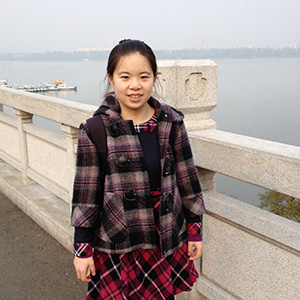 Dr. Chunliang Wu (2023) Lectuer(Assistant Prof.), University of Wenstern Australia
Dr. Chunliang Wu (2023) Lectuer(Assistant Prof.), University of Wenstern Australia -


 Donghyun Kwon(2023) Phd Candidate, KAIST
Donghyun Kwon(2023) Phd Candidate, KAIST -

 Fatemeh Nourmohammadi (2023) PhD candidate,UNSW
Fatemeh Nourmohammadi (2023) PhD candidate,UNSW -

 Dr. Zahra Nourmohammadi (2022) PhD candidate,UNSW
Dr. Zahra Nourmohammadi (2022) PhD candidate,UNSW -

 Dr. Wenhua Jiang (2022) Research fellow, University of Edinburgh
Dr. Wenhua Jiang (2022) Research fellow, University of Edinburgh -

 Dr. Wang Bo (2022) Research fellow, University of Melbourne
Dr. Wang Bo (2022) Research fellow, University of Melbourne -

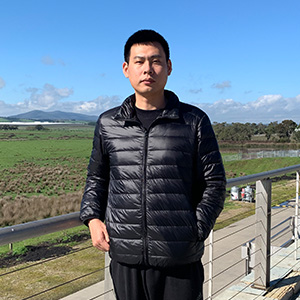 Dr. Kai Huang (2020) Assistant Professor, Southeast University
Dr. Kai Huang (2020) Assistant Professor, Southeast University -

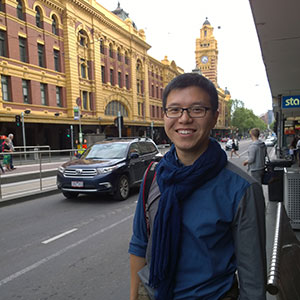 Dr. Tianqi Gu (2020) Assistant Professor, Monash University
Dr. Tianqi Gu (2020) Assistant Professor, Monash University -

 Dr. Xinyuan Chen (2019) Assistant Professor, Nanjing University of Aeronautics and Astronautics
Dr. Xinyuan Chen (2019) Assistant Professor, Nanjing University of Aeronautics and Astronautics -

 Dr. Wentao Jing (2018) Chief Operating Officer, HyperPay
Dr. Wentao Jing (2018) Chief Operating Officer, HyperPay -

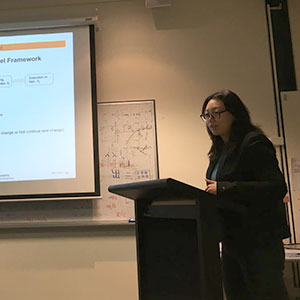 Dr. Xiaoying Cao (2017) Senior Evaluation Officer, VicRoads
Dr. Xiaoying Cao (2017) Senior Evaluation Officer, VicRoads
Profile
Dr. Kim received his Ph.D. from the Department of Civil Engineering, The University of Queensland, Australia, in 2014. He joined the Department of Civil Engineering, Monash University, Melbourne, Australia as a lecturer (Assistant professor) in 2015 and a senior lecturer (Associate professor) in 2019. Dr. Kim moved back to his own country and had a new position as an associate professor at Kongju National University in 2019. Inhi finally settled at Cho Chun Shik Graduate School, KAIST, in 2023.
Before joining The University of Queensland, Inhi worked in German transport software company, PTV Group as a transport engineer and planner. He gained 5 year experience in industry whilst based in Australia, Germany, the United Arab Emirates, and Korea. He was also part of the team, which developed the Vissim pedestrian simulation (an early version of Viswalk). In the company, he was closely involved with transport and traffic planning and modeling, evaluation, and performance measurement of transport programs and projects as a practitioner, research and trainer.
Dr. Kim has particular interests and skills in the areas of demand forecasting, strategic planning, traffic signal operation, logistics, public transportation planning, safety in conjunction with the integration of traffic simulation and driving simulator, and an evaluation of connected cars in safety and efficiency.
Currently Dr. Kim is teaching 2 units; Advanced transportation operation simulation and Advanced transportation planning simulation.
Research Fields
Topic: Modelling Forced Lane Change Execution in Heterogeneous Traffic on Arterial Road
EXECUTIVE SUMMARY
Lane change behaviour, which is one of the primary driving behaviour on roads, plays an important role in macroscopic and microscopic traffic research. However, the majority of lane change research focuses on lane change decision-making models and only a handful of studies relate to lane change execution. An in-depth understanding of lane change execution is therefore needed.
This report presents a study of lane change execution in terms of human perception of hazards. To achieve the overall research aim, the following key tasks have been completed to date. Firstly, according to the traffic characteristics analysis of lane change execution in heterogeneous traffic based on the collected data from an arterial road in Melbourne, the lane changing execution behaviours, such as duration and trajectory, are studied. Lane change conflict is used as an indicator of detecting hazards.
According to the level of lane change conflicts, the study of lane change execution types are classified as free lane change (FrLC) and forced lane change (FoLC). This work has been described in detail in Appendix A&B. Secondly, due to the scarcity and limitation of the research on lane change conflicts, this report proposes a conflict detection model during lane change execution and the automatic discrimination functions for lane change conflict detection. The detailed work is shown in Appendix C&D.
Future work will focus on the lane change execution models and the use of a micro-simulation modelling approach. To ensure the work in each of the phases will be achieved in time, a research schedule is proposed to monitor the progress on the tasks of every phase. Finally, this report concludes with a commentary on the contribution value of the completed work and upcoming work.
Research Fields
Topic: Modelling and Design of Transport Networks with Electric Vehicles
EXECUTIVE SUMMARY
Carbon-based emissions and greenhouse gases (GHG) are critical global issues as addressed by the Kyoto Protocol in 1998. The transport sector is a significant contributor to GHG emissions in most countries, representing 23% of CO2 emissions from fossil fuel combustion in 2005 worldwide, while automobile transport is the principal CO2 emitter. From the energy safety point of view, the transport sector as a whole is also exceedingly affected by changes in energy resources-it is 98% dependent on fossil oil. Therefore, changes to energy structure are in urgent need to reduce emissions and oil-dependence.
Plug-in Electric Vehicles (PEV) are deemed to be a solution as a type of new alternative fuel vehicles (AFV) to reduce GHG emissions. There are a number of studies on the PEV market potential, PEV characteristic, PEV charging facility location problem and PEV routing problem. Given the current scarce deployment of charging facilities and driving range limit, it is crucial for PEV drivers to choose the best route to fulfil their trips while satisfying the charging needs. However, previous studies on PEV routing problems did not consider the stochasticity of travellers. The drivers’ perception errors on the predicted travel time should be accounted for, which is addressed in this study into the PEV routing problems. Hence, a stochastic user equilibrium (SUE) model is needed to perform better on predicting the routing behaviour of PEV drivers. With the more rational SUE model, we could then investigate about the charging facility location problem for the PEV. Battery swapping station (BSS) has much more advantages, such as fast swapping process, than battery charging station (BCS), especially when operating with battery distribution centre (BDC). Range anxiety results from that the EV drivers may worry about running out of energy before reaching the destination or charging station and affects EV drivers’ route choice. Another unsolved problem related to charging process is the lack of compatibility of different chargers plugs. Standardization of charging plugs on a worldwide level is still in urgent need. In other words, there exist multi-class EV charging stations as well as corresponding EV users now.
To achieve this overall research aim, four consecutive stages of work have been proposed. The first stage is the review of relevant literature on PEV’s demand and characteristics, its users’ behaviour, the charging facility location problem, and the traffic assignment problem with relay requirements. In the second stage, the stochastic traffic assignment model of EV with path distance constraints is studied, which imposes an upper bound on the path length that an EV can travel without charging during the trip. Multi-class users and elastic demand are considered in the extensions as well and range anxiety is considered as a stochastic term among the user groups.
The third stage is study of EV BSS network design problem with BDC. It aims to design the BSS network along the corridors to minimize the total cost of locating these facilities to the candidate sites. In the meanwhile, the requirements that there exists a path linking each origin-destination (O-D) pair in which the length between the origin and the first BSS, the BSS and the destination, or any two consecutive BSS does not exceed a pre-set upper bound satisfying should be satisfied. This stage starts with studying one OD pair case along a corridor and then extends to the whole transport network. Multi-class EV users and BSS will also be considered as model extensions.
Models and algorithms of the preliminary work are also presented. Finally, the report concludes with the contribution to research and proposed means of communicating the results of the research.
Research Fields
Topic:Traffic Signal Optimization Using Reinforcement Machine Learning Approach
Introduction
The traffic demand is rapidly increasing in large and medium-sized cities, which leads to traffic congestion. Traffic congestion has brought a series of issues such as traffic delay and air pollution. Many experimental results showed that vehicle exhaust emission increase sharply during interruptions and congestion (Choudhary and Gokhale, 2016). Thus, it is necessary to apply some effective methods to alleviate traffic congestion. Currently, there are two ways to solve this problem. The first way is that in order to improve the road capacity, traffic operators strengthen infrastructure construction, for example, expanding road networks. Although it is a straightforward way, this is not a very reasonable method because it may cost a large amount of money and limited space can be used for expanding (Walraven et al., 2016). The second way is that the advanced and effective intelligent traffic control methods are used to improve traffic management efficiency so as to alleviate traffic congestion. Compared with the first method, the second solution is more feasible because it can control traffic flow based on different traffic conditions and without massive investments of road construction.
At present, the emergence of many machine learning algorithms, which serves as an artificial intelligent learning method, provide a new direction for transportation operators to optimize traffic signals. Reinforcement learning as a new branch of machine learning is a good tool to make traffic control more effective. This method can find some more effective traffic control strategies according to dynamic traffic environment and it does not need the human intervention (Aslani et al., 2017). Many studies have attempted to use this method to optimize traffic signals (Genders and Razavi, 2016; Mousavi et al., 2017; Belletti et al., 2017). These studies proved that applying this approach can reduce delay and travel time effectively compared to traditional traffic control methods. However, few existing research compared different reinforcement learning-based traffic control approaches such as Q-Learning and Policy-Gradient and analyzed which method is more effective. In addition, most of studies used this method to analyze small road networks (Mannion et al., 2016). In other words, they only considered a single agent or a few agents. In reality, an entire network consists of many agents. How expand method to make it to solve large road networks is an interesting research direction. Moreover, it should be noted that in reality, traffic signal controllers do not work very well forever. Several traffic signal controllers might be broken sometimes. So it is necessary to modified this method to make it can be used in reality. Based on above research gaps, the purpose of this research is to use the reinforcement learning method to optimize traffic signals.
Methodology
Reinforcement learning method as an unsupervised way mainly concerns that how agents interactive with their environment to get the maximum reward. Figure 1 shows the fundemantal process of agent-environment interaction. A reinforcement learning task is usually described as a Markov Decision Process (MDP). The MDP consists of the following parts: A set of states S, a set of actions A, a reward function R and a potential transition function T (Puterman, 2014). Supposed that agents in a state s∈S, and agents select an action a∈A. Then, the current state s∈S is changed to a new state s’∈S with probability T∈(0,1), and give a reward R to agents.
In this research, I will use micro-simulation software VISSIM to create a traffic simulation model. This model can provide two parts, namely agents (e.g. vehicles and traffic controllers) and environment (e.g. road and intersection). VISSIM also provides some indicators (e.g. queue length and waiting time) to evaluate any state. Based on these indicators, I can create a reward function to reward agents. It should be noted that the reward function is an objective function and many exiting research only considered one or two optimized objectives. In this study, I will take multi-objective into account and use some multi-objective evaluation methods as reward functions. Then, COM interface of VISSIM will be used to input some reinforcement learning algorithms such as Q-learning and Sarsa to control signals and ensure the agents take actions to get the maximum reward. Moreover, in reality, road networks consist of a large amount of agents and it environment change constantly. In this case, only using the reinforcement learning method may not obtain desired results. This study will attempt to combine the deep learning method and reinforcement learning method together to solve this issue.
Expected Research Contributions
The following questions will be solved in this research: 1. Using micro-simulation software to compare different reinforcement learning-based traffic control strategies, for example Q-learning, Sarsa, Policy-Gradient and so forth. 2. Combining on-policy reinforcement learning method with off-policy to make traffic control more effective. 3. Considering multi objectives to optimize traffic signals by using the reinforcement learning method. A few studies mainly consider how to reduce waiting time of drivers when they optimize traffic signals. Actually, the waiting time of pedestrians also need to take into account. 4. Modified reinforcement learning method and make it solve coordinated signalized control issues. 5. Combining other machine learning methods (deep learning) with the reinforcement learning approach to improve the learning speed and make it can be used in large road networks.
Research Fields
Topic:Multi-modal public transit travel behavior analysis and network design
Introduction
With the rapid development of urbanization and mobility in China, the economic and social development has been seriously constrained by urban traffic congestion and air pollution problems. Faced with these challenges, giving priority to public transport is national strategic choice. Concentrated population, continued increased total resident travel and extended travel distance need efficient and high-capacity public transport system to improve transport capacity and competitiveness. More and more Chinese large cities such as Beijing, Shanghai, Guangzhou, Shenzhen, etc. have already formed a multi-modal public transport system with "rail transit as the backbone transport, bus transit as the main network, taxi as the supplement and Non-motorized traffic mode as the extension".
In the multi-modal public transit system, the separation of the planning and management processes intensifies the patronage competition between different public transit systems, and results in the wasting of transit capacity resources. In order to alleviate the passenger flow competition inside the multi-modal transit systems and improve the overall benefit of the urban public transit system, an integrated method for designing the multi-modal public transit network, which is based on the concept of "one network" and follows the travel mechanism of passengers, is urgently needed.
A number of studies have been conducted concerning the research topic, which mainly focus on the analysis of the basic network characteristics (Dimitrov, 2016; Hu et al. 2017), modeling residents’ travel behavior (Fan and Zhao, 2016), influential factors analysis for travel demand (Cortés et al., and Szeto et al., 2013), multi-modal transit network design (Nayeem et al. 2014; Yan et al. 2013).
With the rapid development of public transit in China, domestic scholars have made some progress in the field of public transit priority development policy, public transit network planning and evaluation, public transit operation scheduling. However, Theories, methods and models concerning travel demand analysis, residents’ travel behavior modeling and facilities configuration are lack of in-depth study, which can be further improved.
Methodology
This research will choose Nanjing City as the study case, which is located at the Yangtze Delta Region in the east of China and it is the second largest city in the Eastern China, next to Shanghai. There are seven urban rail transit lines with 136 stations are in operation, among which, 10 stations are the transfer stations.
(1) Collect and sort the data of public transit and land use in Nanjing and Suzhou, and design SP and RP questionnaires to make the supplementary analysis and sample check.
(2) Use Python programming language to analyze the related residents’ travel behavior data and make visual analysis;
(3) Use the improved MNL and NL model concerning residents’ travel mode choices.
(4) Use a solution algorithm for the optimization model based on the basic genetic algorithm.
The Goals of the Research
The study aims to explore the questions: (1) The characteristics of the backbone transit network, trunk transit network and local transit network in the multi-modal public transit network; (2) What influence travel behavior of residents in multi modal public transit station areas and modeling the residents’ travel mode choice; (3) The passenger flow assignment method in multi-modal transit network, which is based on the method of successive averages with the capacity constraint of the multi-modal transit system; (4) A combinatorial optimization model for the multi-modal public transit networks based on t2he basic genetic algorithm.
SCI Journal
-
2025 — Barua, S.; Mimi, M.S.; Javed, S.A.; Tamakloe, R.; Das, S.
Impact of temporal, spatial, and roadway factors on driver overrides in Level 2 automation: A bivariate binary probit model analysis
Transportation Research Part F: Traffic Psychology and Behaviour -
2025 — Tamakloe, R.; Khorasani, M.; Das, S.; Kim, I.
Pattern recognition in crash clusters involving vehicles with advanced driving technologies
Accident Analysis and Prevention -
2025 — Kutela, B.; Tamakloe, R.; Novat, N.; Kodi, J.H.; Kinero, A.; Shita, H.
Will the widespread driverless passenger vehicles help the elderly and people with disabilities live more independently? Insights from a nationwide survey
Cities -
2025 — Tamakloe, R.; Khorasani, M.; Kim, I.
Differences in injury severities between elderly and non-elderly taxi driver at-fault crashes: Temporal instability and out-of-sample prediction
Accident Analysis and Prevention -
2025 — Adanu, E.K.; Tamakloe, R.; Dzinyela, R.; Agyemang, W.
Assessing the factors associated with pedestrian injury severity in hit-and-run crashes in Ghana
Transportation Letters -
2025 — Tamakloe, R.; Das, S.; Adanu, E.K.; Park, D.
Key factors affecting motorcycle-barrier crash severity: an innovative cluster-regression technique
Transportmetrica A: Transport Science -
2025 — Jafari, M.; Das, S.; Tamakloe, R.; Khan, M.N.; Hossain, A.
Uncovering Individual Heterogeneity in Pedestrian Crash Severity with Mixed Logit Models: A Louisiana Case Study
Transportation Research Record -
2025 — Antariksa, G.; Tamakloe, R.; Liu, J.; Das, S.
Automated and Explainable Artificial Intelligence to Enhance Prediction of Pedestrian Injury Severity
IEEE Transactions on Intelligent Transportation Systems -
2024 — Zhang, K.; Tamakloe, R.; Cao, M.; Kim, I.
Exploring fatal/severe pedestrian injury crash frequency at school zone crash hotspots: using interpretable machine learning to assess the micro-level street environment
Journal of Transport Geography -
2024 — Oh, T.; Lim, J.; Tamakloe, R.; Li, Z.; Kim, I.
Enhancing mutual understanding of e-scooter user's perspective in overtaking maneuver through replaying own driving trajectory
Accident Analysis and Prevention -
2024 — Tamakloe, R.; Adanu, E.K.
Critical patterns associated with vehicle-pedestrian hit-and-run casualty injury severity under different weather conditions: An association rule mining approach
IATSS Research -
2024 — Tamakloe, R.; Caesar, L.D.
Decoding the patterns of critical factor associations driving electric vehicle recommendations
Transportation Research Part A: Policy and Practice -
2024 — Tamakloe, R.; Lee, J.; Park, D.
Efficiency variations of integrated urban transit stations before and during the COVID-19 pandemic: Insights from a Mega-City without pandemic lockdown measures
Cities -
2024 — Tamakloe, R.; Zhang, K.; Kim, I.
Temporal instability of the determinants of fatal/severe elderly pedestrian injury outcomes in intersections and non-intersections before, during, and after the COVID-19 pandemic
Accident Analysis and Prevention -
2024 — Caesar, L.D.; Tamakloe, R.
Unraveling the patterns of critical contributory factors and flag-state affiliations linked with maritime incident outcomes
Marine Policy -
2024 — Tamakloe, R.; Zhang, K.; Hossain, A.; Kim, I.; Park, S.H.
Critical risk factors associated with fatal/severe crash outcomes in personal mobility device rider at-fault crashes: A two-step inter-cluster rule mining technique
Accident Analysis and Prevention -
2024 — Tamakloe, R.; Zhang, K.; Atandzi, J.; Park, D.
Examining urban delivery service user profiles and determinants of drone delivery adoption in Ghana considering usage before and after the COVID-19 pandemic
Transport Policy -
2024 — Das, S.; Dutta, A.; Tamakloe, R.; Khan, M.N.
Analyzing the time-varying patterns of contributing factors in work zone-related crashes
Journal of Transportation Safety and Security -
2023 — Tamakloe, R.; Adanu, E.K.; Atandzi, J.; Das, S.; Lord, D.; Park, D.
Stability of factors influencing walking-along-the-road pedestrian injury severity outcomes under different lighting conditions: A random parameters logit approach with heterogeneity in means and out-of-sample predictions
Accident Analysis and Prevention -
2023 — Das, S.; Tamakloe, R.; Zubaidi, H.; Obaid, I.; Ashifur Rahman, M.
Bicyclist injury severity classification using a random parameter logit model
International Journal of Transportation Science and Technology -
2023 — Tamakloe, R.; Park, D.
Discovering latent topics and trends in autonomous vehicle-related research: A structural topic modelling approach
Transport Policy -
2023 — Tamakloe, R.
Risk Factors Influencing Fatal Powered Two-Wheeler At-Fault and Not-at-Fault Crashes: An Application of Spatio-Temporal Hotspot and Association Rule Mining Techniques
Informatics -
2022 — Tamakloe, R.; Das, S.; Aidoo, E.; Park, D.
Factors affecting motorcycle crash casualty severity at signalized and non-signalized intersections in Ghana: Insights from a data mining and binary logit regression approach
Accident Analysis and Prevention -
2022 — Tamakloe, R.; Sam, E.F.; Bencekri, M.; Das, S.; Park, D.
Mining groups of factors influencing bus/minibus crash severities on poor pavement condition roads considering different lighting status
Traffic Injury Prevention -
2022 — Tamakloe, R.; Park, D.; Chang, H.
Discovering research topics, trends, and perspectives in COVID-19-related transportation journal articles
International Journal of Urban Sciences -
2021 — Tamakloe, R.; Lim, S.; Sam, E.F.; Park, S.H.; Park, D.
Investigating factors affecting bus/minibus accident severity in a developing country for different subgroup datasets characterised by time, pavement, and light conditions
Accident Analysis and Prevention -
2021 — Das, S.; Tamakloe, R.; Zubaidi, H.; Obaid, I.; Alnedawi, A.
Fatal pedestrian crashes at intersections: Trend mining using association rules
Accident Analysis and Prevention -
2021 — Tamakloe, R.; Hong, J.; Tak, J.; Park, D.
Finding evacuation routes using traffic and network structure information
Transportation Research Part D: Transport and Environment -
2020 — Tamakloe, R.; Hong, J.; Park, D.
A copula-based approach for jointly modeling crash severity and number of vehicles involved in express bus crashes on expressways considering temporal stability of data
Accident Analysis and Prevention -
2020 — Hong, J.; Tamakloe, R.; Park, D.
Application of association rules mining algorithm for hazardous materials transportation crashes on expressway
Accident Analysis and Prevention
SCI Journal
-
2025 — Chun, G.; Rouphail, N.M.
A movement-based delay model for signalised alternative intersections
Transportmetrica A: Transport Science -
2025 — Chun, G.; Oh, S.; Jang, K.
Effect of Pedestrians on Right-Turn Capacity under Heterogeneous Traffic Conditions
Transportation Research Record -
2025 — Chun, G.; Rouphail, N.M.; Akçelik, R.
Roundabout Capacity Survey Method Using Vehicle Trajectory Data and Gap Acceptance Cycles
Transportation Research Record -
2023 — Chun, G.; Rouphail, N.M.; Samandar, M.S.; List, G.; Yang, G.; Akcxelik, R.
Analytical and Microsimulation Model Calibration and Validation: Application to Roundabouts under Sight-Restricted Conditions
Transportation Research Record -
2022 — Samandar, M.S.; Chun, G.; Yang, G.; Chase, T.; Rouphail, N.M.; List, G.
Capitalizing on Drone Videos to Calibrate Simulation Models for Signalized Intersections and Roundabouts
Transportation Research Record -
2022 — Ahmed, I.; Williams, B.M.; Samandar, M.S.; Chun, G.
Investigating the relationship between freeway rear-end crash rates and macroscopically modeled reaction time
Transportmetrica A: Transport Science -
2019 — Ahmed, I.; Karr, A.; Rouphail, N.M.; Chun, G.; Tanvir, S.
Characterizing Lane Changes via Digitized Infrastructure and Low-Cost GPS
Transportation Research Record
SCI Journal
-
2025 — T Oh, M Kim, .... G Chun, I Kim .... (Total 15 authors)
A Scalable and Interoperable C-V2X framework for Real-time Intelligent Decision Support in Autonomous Mobility
Communications in Transportation Research -
2025 — S Ye, T Chen, O Oviedo-Trespalacios, Y Ali, T Oh, I Kim
How do the drivers react to different C-V2X-based communication conditions in dilemma zones? A driving simulator study
Accident Analysis & Prevention -
2025 — J Lim, H Park, T Oh, I Kim
The impact of information delivery systems in tunnels depending on lighting intensity and speed limit
Tunnelling and Underground Space Technology -
2024 — T Oh, J Lim, R Tamakloe, Z Li, I Kim
Enhancing mutual understanding of e-scooter user’s perspective in overtaking maneuver through replaying own driving trajectory
Accident Analysis & Prevention -
2024 — T Oh, H Kang, Z Li
Exploring Safe Overtaking Behavior on Two‐Lane Two‐Way Road Using Multiagent Driving Simulators and Traffic Simulation
Journal of Advanced Transportation -
2024 — H Park, T Oh, I Kim
Effects of driver’s braking behavior by the real-time pedestrian scale warning system
Accident Analysis & Prevention -
2022 — T Oh, Y Xu, Z Li, I Kim
Driving Risk Analysis Based on Driving Experience at Hook‐Turn Intersection Using the Emerging Virtual Reality Technology
Journal of Advanced Transportation -
2022 — L Xu, T Oh, I Kim, X Hu
Are shared streets acceptable to pedestrians and drivers? Evidence from Virtual Reality experiments
PLoS One -
2021 — Z Xu, X Zou, T Oh, HL Vu
Studying freeway merging conflicts using virtual reality technology
Journal of Safety Research
SCI Journal
-
2025 — H Park, T Oh, J Lim, I Kim
Micro Mobility Safety Challenges: A Study on Drivers Overtaking Bicycles and E-Scooters in Relation to Road Conditions and Prior Riding Experience
Transportation Research Part F: Traffic Psychology and Behaviour -
2025 — J Lim, H Park, T Oh, I Kim
The impact of information delivery systems in tunnels depending on lighting intensity and speed limit
Tunnelling and Underground Space Technology -
2024 — H Park, T Oh, I Kim
Effects of driver’s braking behavior by the real-time pedestrian scale warning system
Accident Analysis & Prevention
Awards
-
2025 — TRB Outstanding Paper Award
TRB — International -
2025 — The 2nd IPESK Young Investigator Award in Engineering
IPESK — Domestic -
2024 — KOTAA Travel Grant Award
KOTAA — International -
2024 — Graduate Student Research Encouragement Fund
NRF (National Research Foundation) — Domestic -
2024 — 2024 KAIST Graduate Student Outstanding Paper Award
KAIST — Domestic -
2024 — Young-Han Kim Global Leader Scholarship
KAIST — Domestic -
2024 — Best Teaching Assistant Award
KAIST — Domestic -
2024 — President's Award
Korean Society of Transportation (KST) — Domestic -
2023 — Excellent Paper Award
Korean Society of Intelligent Transport Systems (KITS) — Domestic -
2021 — Excellent Paper Award
Korean Society of Intelligent Transport Systems (KITS) — Domestic -
2021 — President's Award
K2H Triangle Creative Design Camp — Domestic -
2020 — Excellence Award at the Big Data Analysis Competition
MOF (Ministry of Oceans and Fisheries) — Domestic
SCI Journal
-
2023 — Kwon, D., Lee, C., Kang, H., & Kim, I.
Large-scale Network Imputation and Prediction of Traffic Volume based on Multi-source Data Collection System
Transportation Research Record
Awards
-
2025 — Best Paper Award
The Korean Society of Intelligent Transport Systems — Domestic -
2024 — Young Scholar Award
MESH (Mobility Ecology Summit Hour) — Domestic -
2024 — KOTAA Travel Grant Award
KOTAA — International -
2023 — Brain Korea 21 (BK21) Scholarships
Kongju National University — Domestic -
2022 — Kakao Mobility Data Contest Golden Award
40th Anniversary of the Korean Society of Transportation — International -
2022 — Best Paper Award
Korean Society of Transportation (KST) — Domestic -
2022 — Best Paper Award
The Korean Society of Intelligent Transport Systems — Domestic -
2022 — Research Excellence Scholarships
Kongju National University — Domestic -
2021 — Best Paper Award
Korean Society of Transportation (KST) — Domestic -
2021 — Best Paper Award
Kongju National University — Domestic -
2021 — Academic Excellence Scholarships
Kongju National University — Domestic -
2020 — Best Paper Award
The Korean Society of Intelligent Transport Systems — Domestic
SCI Journal
-
2025 — Lin, T., Kim, Z., Yeo, H., Kim, I.
Evaluation of Pedestrian Future Conflict at Non-signalized Intersections based on Probabilistic Trajectory Prediction
IEEE Transactions on Intelligent Transportation Systems
Awards
-
2023 — Excellence Award in Metropolitan Area Transportation Innovation Competition
Korean Society of Transportation (KST) — Domestic
SCI Journal
-
2025 — Reuben Tamakloe, Mahdi Khorasani, Subasish Das, Inhi Kim
Pattern recognition in crash clusters involving vehicles with advanced driving technologies
Accident Analysis & Prevention -
2025 — Reuben Tamakloe, Mahdi Khorasani, Inhi Kim
Differences in injury severities between elderly and non-elderly taxi driver at-fault crashes: Temporal instability and out-of-sample prediction
Accident Analysis & Prevention
Awards
-
2025 — IEEE ITSC 2025 Travel Grant
IEEE ITSC 2025 — Domestic
SCI Journal
-
2025 — J Lim, H Park, T Oh, I Kim
The impact of information delivery systems in tunnels depending on lighting intensity and speed limit
Tunnelling and Underground Space Technology -
2024 — T Oh, J Lim, R Tamakloe, Z Li, I Kim
Enhancing mutual understanding of e-scooter user’s perspective in overtaking maneuver through replaying own driving trajectory
Accident Analysis & Prevention -
2024 — Tu, C., Wang, L., Lim, J., & Kim, I.
Advancements and prospects in multisensor fusion for autonomous driving
Journal of Intelligent and Connected Vehicles
Awards
-
2025 — Park Chang Ho Scholarship Transportation Division Scholar
KST — Domestic -
2024 — KOTAA Travel Grant Award
KOTAA — International -
2023 — Excellence Paper Award
KITS — Domestic -
2022 — Grand Prize
KITS — Domestic
SCI Journal
-
2025 — Reuben Tamakloe, Kaihan Zhang, Donghyun Kwon, Inhi Kim
Elderly pedestrian safety in silver zones: A temporal instability analysis of injury severity determinants
Journal of Traffic and Transportation Engineering (English Edition) -
2025 — Cui, Q., Zhang, Y., Ma, H., Zhang, K.
How about electric vehicle? Sensing owners’ experiences and attitudes through online short video.
Transport Policy -
2025 — Cui, Q., Huang, C., Zhang, K.
Weather effects on highway travel volume: Electric vs. Fuel vehicles
Transportation Research Part D: Transport and Environment -
2025 — Gu, T., Zhang, K., Xu, W., Zhuang, C., Jiang, Z., Kim, I.
Free interchange for better transit? Assessing the multi-dimensional impacts on metro to bus interchange behavior− insights from an explainable machine learning method
Travel Behaviour and Society -
2025 — Tamakloe, R., Zhang, K., *Kim, I.
Temporal instability of the determinants of fatal/severe elderly pedestrian injury outcomes in intersections and non-intersections before, during, and after the COVID-19 pandemic
Accident Analysis & Prevention -
2025 — Tamakloe, R., Zhang, K., Hossain, A., Kim, I.
Critical risk factors associated with fatal/severe crash outcomes in personal mobility device rider at-fault crashes: A two-step inter-cluster rule mining technique
Accident Analysis & Prevention -
2025 — Zhang, K., Shang, W. L., De Vos, J., Zhang, Y., & Cao, M.
Illuminating the path to more equitable access to urban parks
Scientific Reports -
2025 — Zhang, K., Song, Q., Ma, H., Qiu, W., Li, M., & *Kim, I.
Synergistic role of audio-visual perceptions in promoting bikeshare for active travel
Transportation Research Part D: Transport and Environment -
2024 — *Tamakloe, R., Zhang, K., Atandzi, J., & Park, D.
Examining urban delivery service user profiles and determinants of drone delivery adoption in Ghana considering usage before and after the COVID-19 pandemic
Transport Policy -
2024 — Zhang, K., Tamakloe, R., *Kim, I.
Exploring fatal/severe pedestrian injury crash frequency at school zone crash hotspots: using interpretable machine learning to assess the micro-level street environment
Journal of Transport Geography
Awards
-
2025 — Young-Han Kim Global Leader Scholarship
KAIST — Domestic -
2025 — IACP Travel Grant
International Association for China Planning (IACP) — International -
2025 — Best Collaborative Innovation Award
Tongji University, China — International -
2025 — Winner of Best Presentation
AUTULE — International
SCI Journal
-
2025 — T Oh, M Kim, .... G Chun, I Kim .... (Total 15 authors)
A Scalable and Interoperable C-V2X framework for Real-time Intelligent Decision Support in Autonomous Mobility
Communications in Transportation Research
Awards
-
2023 — Excellence Award in Metropolitan Area Transportation Innovation Competition
Korean Society of Transportation (KST) — Domestic
Awards
-
2025 — Master's Outstanding Scholarship for STEM
National Research Foudataion(NRF) — Domestic
SCI Journal
-
2025 — Yonghui Liu, Qian Li, Inhi Kim
Enhanced trajectory reconstruction from sparse and noisy GPS data: A progressive chunked transformer approach
Communications in Transportation Research -
2022 — H Zeng, P Jiao, Y Liu, U Karki, FZ Peng
Analytical modeling of resonant converters in frequency domain for wireless power transfer: Continuous current mode (CCM) operation
Energy -
2021 — T Pähtz, Y Liu, Y Xia, P Hu, Z He, K Tholen
Unified model of sediment transport threshold and rate across weak and intense subaqueous bedload, windblown sand, and windblown snow
Journal of Geophysical Research: Earth Surface
SCI Journal
-
2024 — Jung, Jaeeun, Inhi Kim, and Jinwon Yoon
EcoMRL: Deep reinforcement learning-based traffic signal control for urban air quality
International Journal of Sustainable Transportation
Awards
-
2025 — KOTAA Travel Grant Award
KOTAA — International -
2024 — KOTAA Travel Grant Award
KOTAA — International -
2024 — Graduate Student Research Encouragement Fund
NRF (National Research Foundation) — Domestic -
2024 — Best Paper Award
The Korean Society of Intelligent Transportation — Domestic -
2022 — Excellent Paper Award in Science and Technology
The Korean Federation of Science and Technology Societies — Domestic -
2022 — Academic Award
Korean Society of Transportation (KST) — Domestic -
2022 — First Prize
Kongju National University Graduate School — Domestic -
2021 — Grand Prize
MOF (Ministry of Oceans and Fisheries) — Domestic -
2020 — Best Paper Award
Korean Society of Transportation (KST) — Domestic
Awards
-
2022 — Best Paper Award
Korean Society of Transportation (KST) — Domestic -
2022 — Best Paper Award
The Korean Society of Intelligent Transport Systems — Domestic -
2021 — Grand Prize
Korea Maritime Transportation Safety Authority [KOMSA] — Domestic -
2021 — Best Paper Award
Korean Society of Transportation (KST) — Domestic -
2021 — Park Chang Ho Scholarship Transportation Division Scholar
Korean Society of Transportation (KST) — Domestic
Awards
-
2024 — Global Korea Scholarship for Graduate Degrees
Korea Government — International
Awards
-
2025 — Best Paper Award
2025 Suwon ITS AP Forum — International -
2025 — KOTAA Travel Grant Award
KOTAA — International -
2024 — KOTAA Travel Grant Award
KOTAA — International -
2023 — Excellence Award in Metropolitan Area Transportation Innovation Competition
Korean Society of Transportation (KST) — Domestic -
2022 — Grand Prize
Korean Society of Intelligent Transport Systems (KITS) — International -
2022 — Excellence Award
MOF (Ministry of Oceans and Fisheries) — Domestic -
2022 — Best Paper Award
Korean Society of Transportation (KST) — Domestic
Research Fields
Topic:Travel Patterns Identification From Longitudinal Perspectives by Using Mobile Phone Data
Introduction
Passively generated mobile phone data is emerging as a potential data source for transportation research and applications (Wang,F, et al,.2018 ). Traditional travel behavior analysis leads survey data to extract travelers behaviors information from a normal day’s activities and to record trips take place with low frequencies within a short time period. The mobile phone data enable researchers to further underlying travel patterns in terms of inter-personal similarity and variation in travel behavior(Wang,Z, et al,.2018). Many researches have already explored this topic in different aspects, still the mobile phone data has the potential to promote the research in travel mobility pattern identification.
This research aimes to address two following questions: 1. How the large scale anomalous events affect the travel mobility patterns (e.g.nature hazard and public holidays)? 2. How the travel mobility patterns be identified in a longer term dynamic frame (over 1 month time period)?
These are the questions potentially ignored by the previous travel behavior analysts due to lack of longitudinal travel data (Cynthia, et al,.2016). Combining displacements captured from the mobile phone data with the real-world network system, researchers are able to infer activity locations and trajectories, then to analyze the spatiotemporal dynamics of the movement patterns of the sample of the abnormal/occasional events(Marques-Neo, et al,.2018)
With those questions, this research can contribute to a better understanding of the spatiotemporal features of network evolution. Thus, this research will give insights about transportation management in special events and hazard mitigation system.
Methodology
The methodology this project plan to use is: first, applying(developing) state-of-the-art algorithms to build an activity-based data processing framework,mining the raw mobile phone data and then infering trajectories and activity locations from it. As human daily mobility can be highly structural-organized by a few activities essential to life (Jiang, et.al,.2017),the human mobility patterns in the study area can be structured by identifying the daily motifs.
Few significant anomalous time points will be selected to compare with normal days. After that, the research will try to test the potential intra-personal travel behavior variations, like residential relocations, changes of seasons (Wang,2014) over an extended period.
Geographical Information System will also be applied in this research trying to demonstrate the spatial relationships and for map visualization purpose.
Research Fields
Topic: Modelling for Park-and-Ride in multi-modal transport network
EXECUTIVE SUMMARY
The rapid development of metropolis require effective transport demand management to maintain transport system be sustainable. With the growth of metropolis, the population is becoming decentralized which means commuters have to travel for a longer distance from their home to work every day. Thus, an effective travel mode is required to satisfy commuters’ travel demand.
On the other hand, traffic congestion in metropolis has ready lead to increased delay and economic loss for the whole society. Due to limitation of spatial and economic, conventional way for traffic congestion is unsustainable. Transportation demand management become a priority.
Then, Park and Ride (PNR) appears under that background. PNR requires the provision of dedicated car parks located at a place with direct access to transit services . Travelers drive from their home to a PNR car park, park their car and then transfer to transit system .
With the provision of PNR, travelers will enjoy the efficiency of the first leg of their trip and avoid traffic congestion in the second leg. What is more, provision of PNR sites contribute to enhance the catchment of transit services.
Studies on PNR is extensive, and can be generally classified into two categories: empirical analysis and mathematical modeling . Application practices of PNR facilities have attracted much attention in past decades. Some representative works include early developments such as a postal survey of European PNR systems, an experience report of Singapore’s PNR scheme, PNR survey reviews in Scotland and Hong Kong and a PNR attitude survey in the United States, recent developments focusing on PNR motivation analysis, as well as user willingness and satisfaction surveys .
Mathematical modelling for PNR can also be categorized into two categories: PNR commuting pattern and location. Modelling for PNR commuting pattern focus on evaluate the influence of PNR schemes on the urban transport network. Since the seminal study on PNR with network equilibrium by Fernandez et al (1994) , commuting pattern analysis has been studied extensively by transport planners and economists. Studies on equilibrium commuting pattern can be further categorized into three types: modelling for PNR commuting pattern along a linear city; equilibrium models that combine mode choice and path choice; dynamic traffic equilibrium modelling.
Location study for PNR The mixed integer linear program and multi objective spatial optimization model are developed to address the PNR location problem.
Research Fields
Topic: Modeling for the Ride Sharing Problems in Urban Cities
EXECUTIVE SUMMARY
Ride sharing is becoming a popular travel mode in an increasing number of big cities. Apart from reducing traffic emissions and ameliorating traffic congestion, Ride sharing can bestow personal benefits, including cost reduction, trip convenience, etc. Car Sharing and Taxi Sharing are the main forms in the study of ride sharing. There are three aspects throughout the car sharing or taxi sharing procedure: matching, e routing and pricing.
Ride share matching occurs in very diverse circumstances. To better understand these matching patterns, we divide ride share matching into two categories: passenger-based or driver-based according to the party who initiates the ride sharing.
Ride share routing mainly focuses on the dynamic optimization model: these models aim to save travel time and minimize the distance travelled. Due to the complexity of the models used, some heuristic algorithms are used as solution methods. Those algorithms mainly include the Particle Swarm Optimization (PSO) algorithm, genetic algorithms, simulated annealing algorithms, Lagrangian decomposition and the greedy randomized adaptive search procedure (GRASP) algorithm.
Ride sharing pricing is to benefit both sharing passengers and the driver. A win-win pricing pattern is necessary. Equity is an important ingredient in this win-win game: whose destination is the first choice, and how much each one should pay when their travel distances are different remain as open questions. To ensure equity, various pricing methods are proposed: based on the number of passengers, travel distance, and trip urgency.
A basic requirement of each passenger on the ride sharing is to gain from the sharing rather than to lose. Hence, a concise allocation method which is convenient for practical use should be developed for the optimal ride sharing plan. Two key questions will be addressed: who should share a vehicle (the matching and the routing problem) and how much each of them should pay (the pricing problem).
Regarding the second question, for any two given passengers, a fair fare allocation method will be developed first. Then, based on this method, the optimal sharing plan of two different charging types will be investigated: deterministic fare (only charged on trip distance) and stochastic fare (trip time is also charged). A system optimal static model and an efficient dynamic model will be developed for the case of deterministic fare, both of which give the optimal solutions.
Its contributions include: (i) unlike matching agencies that require a large volume of participants of drivers and passengers, ride sharing simply works in a “business as usual” manner if the number of passengers is small; (ii) unlike service operators that use their own vehicles and drivers which usually require advanced booking, demand for ride sharing at the roadside can be satisfied in real time.
This research proposal provides an initial step on the optimal determination of ride sharing scheme, where some practical issues (fairness, sharing in team, queuing, payment method, etc.) for real implementations will be discussed as well. However, the practical situations are more complicated. Efforts are needed to further address other practical issues and incorporate them into the model; for instance, the ride sharing scheme has reduced each passenger’s trip expenses, thus it would change the modal split and increase the mode share of users. Hence, for the sake of modelling, the demand elasticity and multimodal equilibrium should be further investigated.
Reference
1. Agatz, N., Erera, A., Savelsbergh, M., & Wang, X. (2012). Optimization for dynamic ride-sharing: A review. European Journal of Operational Research, 223(2), 295-303.
2. Hosni, H., Naoum-Sawaya, J., & Artail, H. (2014). The shared-taxi problem: Formulation and solution methods. Transportation Research Part B: Methodological, 70, 303-318.
3. Sayarshad, H., & Chow, J. (2015). A scalable non-myopic dynamic dial-a-ride and pricing problem. Transportation Research Part B: Methodological. DOI: 10.1016/j.trb.2015.06.008.
4. Xu, H., Pang, J., Ordóñez, F., & Dessouky, M. (2015). Complementarity models for traffic equilibrium with ridesharing. Transportation Research Part B: Methodological, 81, 161-182.
Research Fields
Topic: E-bike and public-shared bike’s mobility, feasibility and safety in fast urbanization process
EXECUTIVE SUMMARY
My proposed research is E-bike and public-shared bike’s mobility, feasibility and safety in fast urbanization countries like China. These two are considerable components of slow transport, consist of significant part of urban transport modes in China (in plain cities the share rate of E-bike could be over 30%).
According to my experience, the last six years witnessed the fast urbanization process of China- in year 2010 there were 0.42 million private-vehicles in Suzhou (a big city near Shanghai where I live), by 2015 the number went up to 1.2 million. While the public mass are prone to gas and noise pollution, private cars’ drivers themselves are also suffering from more serious traffic congestion. On the other hand, fast mobilization leads to increasing accidents between motorized and non-motorized transport like E-bike and public-shared bike.
As for E-Bike, although it is strong tool to improve the accessibility in old town with narrow allies where traditional transit services are hard to offer services, meanwhile there is obvious downside. Since there is few limit for various people to use E-bike, and its high-speed (over 40km/h), E-bike is often considered to be potential traffic-law-breaker and significant reason of traffic accidents. And for public shared bike (PS-bikes), it sprouts out rapidly these days; it is considered to be powerful compliment of public transport and meant to solve the last-kilometer transferring problem. Yet is still suffers a lot when it comes to its dispatch and locating issues.
By studying these two, they could help to promote green transport environment, optimize public transport service as well as enhancing transport safety. By digging in the bid data behind ps-bike usage, travel behaviors and preference are easier to be exposed so that researchers could obtain a deeper understanding of transport pattern and ultimately develop a mode that could balance the safety and efficiency.
Reference
The methodology will be setting the proposed goals, collecting and analyzing big data case studying, modeling and application in real problem if possible.
[1] ChoonPiew Pow. Constructing a new private order: gated communities and the privatization of urban life in post-reform Shanghai[J]. Social & Cultural Geography, 2007, 8(6):813-833
[2] Li Shiqiao. Understanding the Chinese City[M]. Canadian Geographer, 2015, 59(3):e79-e80
[3] Gwen CS, Margaret CM. Innovations in Bus, Rail, and Specialized Transit Operations in Latin America[EO/OL].(2005-6-3). http:www.trb.org/news/blurb_detail.asp?id=5056
Research Fields
Topic: Short-term rail passenger flow forecasting application
Short-term rail passenger flow forecasting is a vital component of rail transportation systems. The forecasting results can be applied to support rail system management such as operation planning, real-time railway rescheduling as well as public safety. Short-term passenger flow forecasting has several successful applications in previous literatures. Autoregressive integrated moving average model, neural networks and the traditional travel demand forecasting model are mainly applied to forecast the rail passenger flow. However, some disadvantages including the choice of impact features (e.g. weather, temporal factors), the combination with real-time information and the applicability exist.
First, the criteria of the choice of impact features are vague. Different feature importance rankings input in prediction model do make a difference on the prediction results. Second, most methods perform well in modeling linear and stationary time series, however, they are limited at capturing the structure of non-linear relationships, which make a low applicability in real-time circumstances. Third, almost all methods used in short-term passenger flow forecasting like neural networks, non-parametric regression and Gaussian maximum likelihood are black boxes. We cannot understand the underlying mechanisms which are worth researching in many reasons such as finding the sources of undesired rail passenger flow congestion.
We propose to forecast the short-term rail passenger flow with human mobility networks. Previous research indicated that stable patterns exist in individual human mobility. Human trajectories showed a high degree of temporal and spatial regularity which governs human motion. The twelve hours in daytime are separated into twelve time windows with one hour for each time interval. For each time window, we build a human mobility network using historical rail card data. In this way, different human mobility networks are applied to different time windows. Combined these networks with corresponding real-time rail card data, the goal could be achieved in an accurate and efficient way. With human mobility networks, the proposed method comes to be easy applying and closely combined with real-time rail card data.
Our objectives are set to mainly solve these three disadvantages existed in previous research. First, the criteria of the choice of impact features (e.g. weather, temporal factors) are vague. Different feature importance rankings input in prediction model do make a difference on the prediction results. Second, most methods perform well in modeling linear and stationary time series, however, they are limited at capturing the structure of non-linear relationships, which make a low applicability in real-time circumstances. Third, almost all methods used in short-term passenger flow forecasting like neural networks, non-parametric regression and Gaussian maximum likelihood are black box. We cannot understand the underlying mechanisms which are worth researching in many reasons such as finding the sources of undesired rail passenger flow congestion. Hence, our research objectives focus on the accurate prediction of rail passenger flow as well as the easy applying and closely combination with real-time information. With human mobility networks in different time windows, we propose to achieve that objective. Also, we try to capture the characteristics of short-term passenger flow and understand the underlying mechanisms.
© 2025 TUPA. All rights reserved.



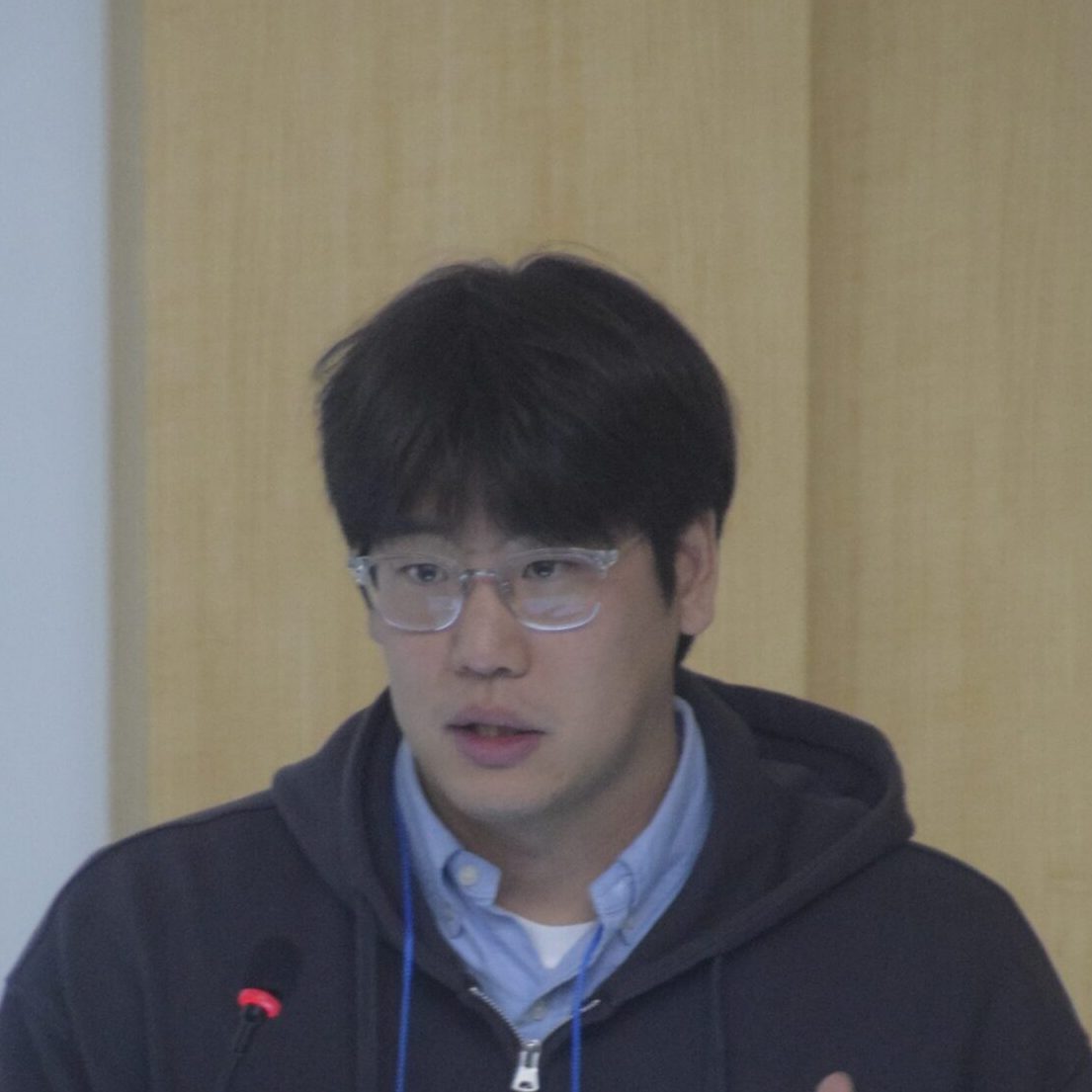




















-e1757849923202.png)

